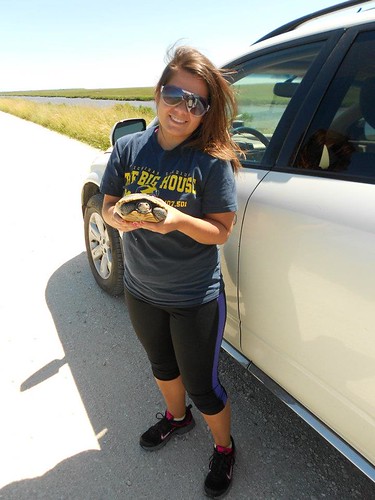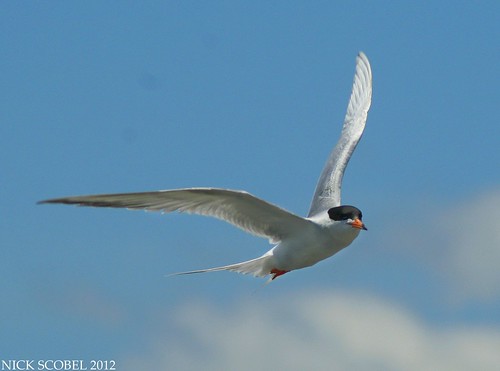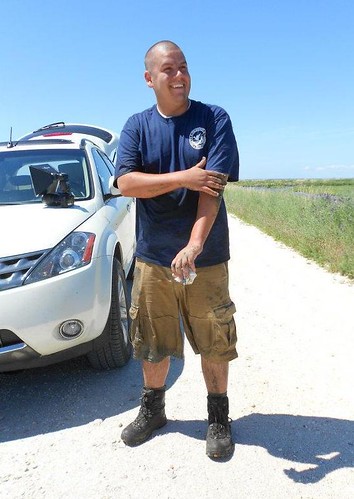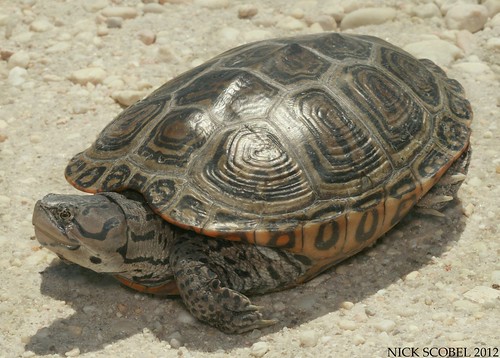Northern Diamondback Terrapin - Malaclemys terrapin terrapin
Terrapins are unique among North American turtles, as they are the only species which are adapted to life in the brackish waters of coastal salt marshes. Terps have had a tough go over the past century. They were overhunted in the early 1900s for their meat, which was considered a delicacy. This nearly led to the extirpation of many populations along the eastern seaboard, until the great depression of the 1930s put a damper on the demand for terrapin meat. Their numbers began to recover in the 1950s and 1960s but were once again threatened as much of their habitat was developed due to its high real estate value along the shore. This in part brought many people to the shore and required the building of highways and causeways through terrapin habitat, exposing huge numbers of terrapins to road mortality events. Terps continue to face these threats to this day, though many conservation organizations have taken steps to help conserve them in Jersey. In some places like the location we visited, terrapins are still doing incredibly well. After photographing the turtle above, we found another crossing a road a few minutes later and my sister was brave enough to help get it off the road, but not before a quick photo.
This would be common theme for the day, female terrapins were all over the roads. However huge numbers of Greenheads (Tabanus nigrovittatus); a horsefly which inhabits salt marshes, kept out time outside of the car to a limit. But I decided to fend off the hoards of biting flies to get some photos of these awesome birds, something we don't get to see back home in Michigan.
Forster's Tern - Sterna forsteri
I wouldn't consider myself to be much of a birder, but shorebirds are a favorite of mine. Watching large numbers of these terns hover in the strong winds blowing off the ocean and then dive straight into the water to catch fish was awesome. I literally snapped 200 photos of this particular bird and only got two or three good shots out of it. We also saw oystercatchers, ospreys, herons, greater & lesser yellowlegs, and a bunch of other shorebirds. While walking down a bank of the salt marsh, I learned the hard way that these mudflats can be particularly slippery.
Before I knew it, I was waist deep in the brackish waters of a coastal salt marsh. My family got to enjoy my mucky smell for the remainder of the afternoon, though my mom couldn't stop laughing at the sight of me struggling to get back onto the bank. I'm just glad I didn't have my camera in hand at the time I took the spill. After a quick change of footwear, we stopped at one trail which extends into the heart of the salt marsh. Because of the low tide, we got to see literally thousands of Fiddler Crabs.
It was funny watching them move en mass as a group almost like a flock of birds evading a predator, no Jurassic Park pun intended. We also noticed several big males in jousting matches over real estate, it was quite entertaining to watch. I wanted to grab one for a close up shot, but I figured one spill into the muck was good enough for one day. Though the tide was low, I did spot this pretty terrapin swimming about in the shallows looking for crabs and other invertebrates to snack on.
Northern Diamondback Terrapin - Malaclemys terrapin terrapin
We decided to continue driving through the preserve and observed a bunch of other terrapins crossing roads. We were also fortunate enough to observe several females nesting along the embankments of the roadways through the marsh. Unfortunately this is the only available upland areas for terrapins in the region, and often causes them to be hit by cars while laying their nests.
Terrapins are an incredibly
variable species, with some individuals being almost devoid of
patterning and others being brilliantly marked. The last turtle we saw happened to be an absolutely gorgeous female, easily one of the nicest I've seen in the field.
Northern Diamondback Terrapin - Malaclemys terrapin terrapin
It was a great way to end a fun day with my family, and spending time with them in natural areas is always something that I enjoy. The Northern Diamondback Terrapin is listed as a Species
of Special Concern in New Jersey, but they could be upgraded to
Threatened based on the huge numbers that are killed on roadways every
year. The future remains uncertain for the terrapins which are found in these unique habitats along the Jersey shore, but continuing conservation efforts will keep light on the horizon for this species.









No comments:
Post a Comment